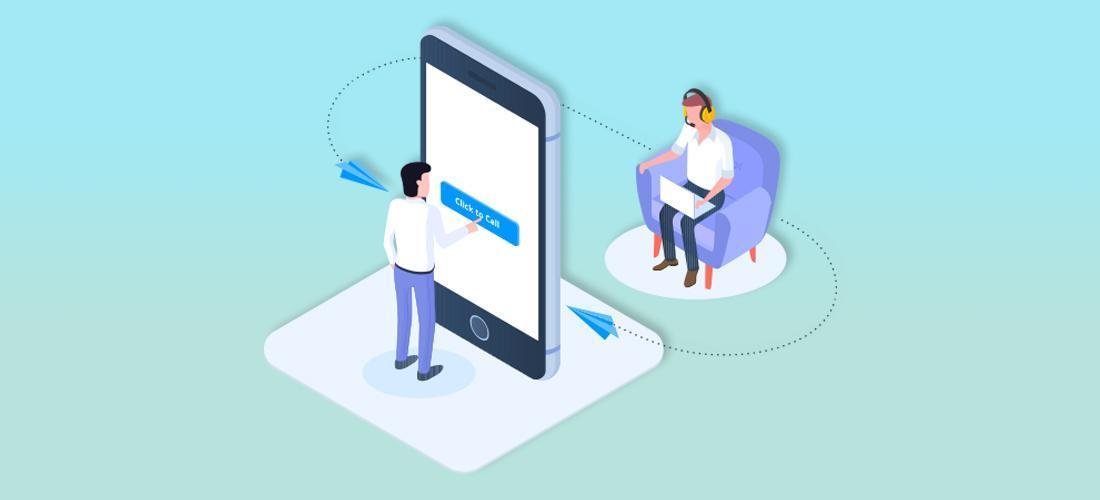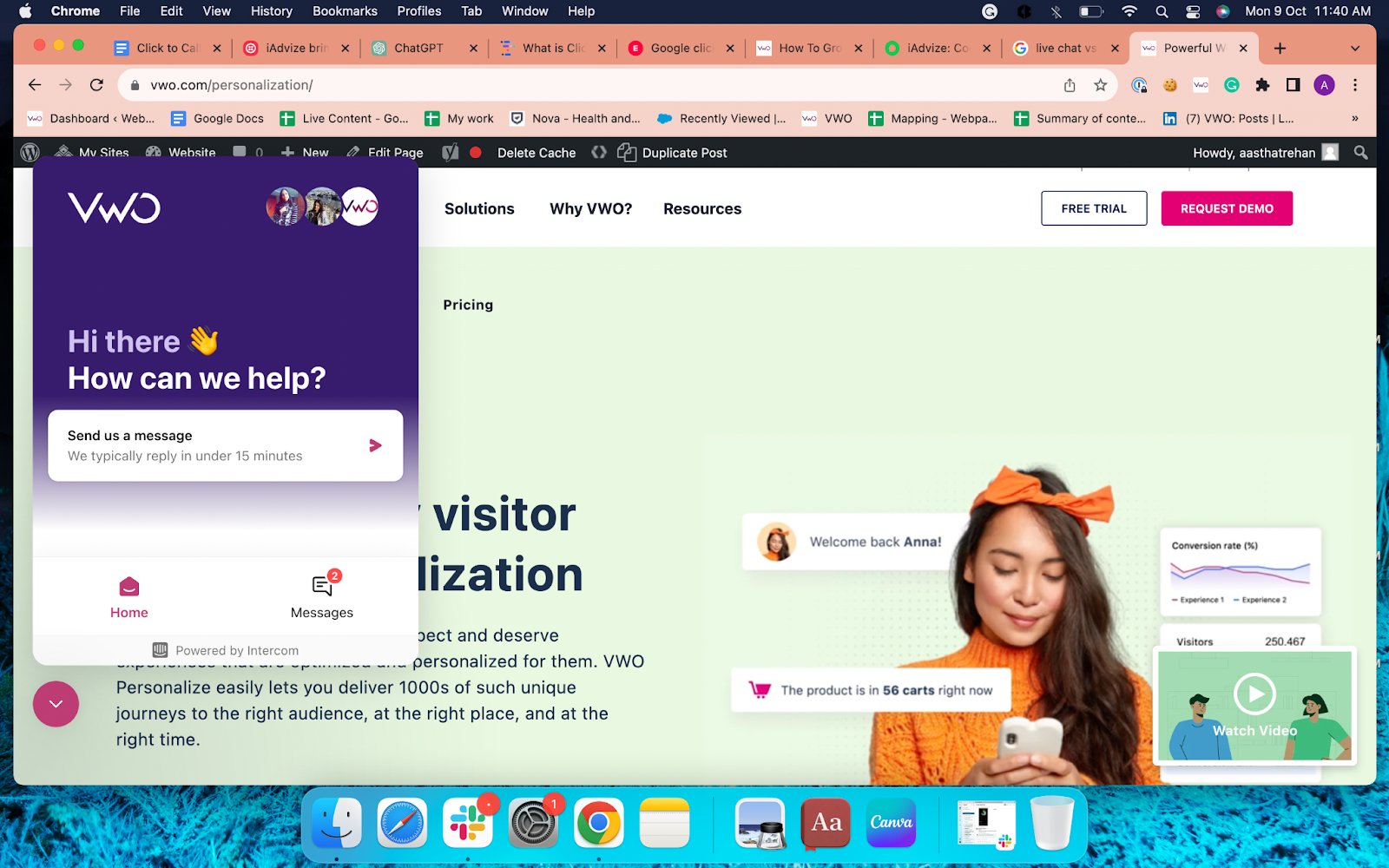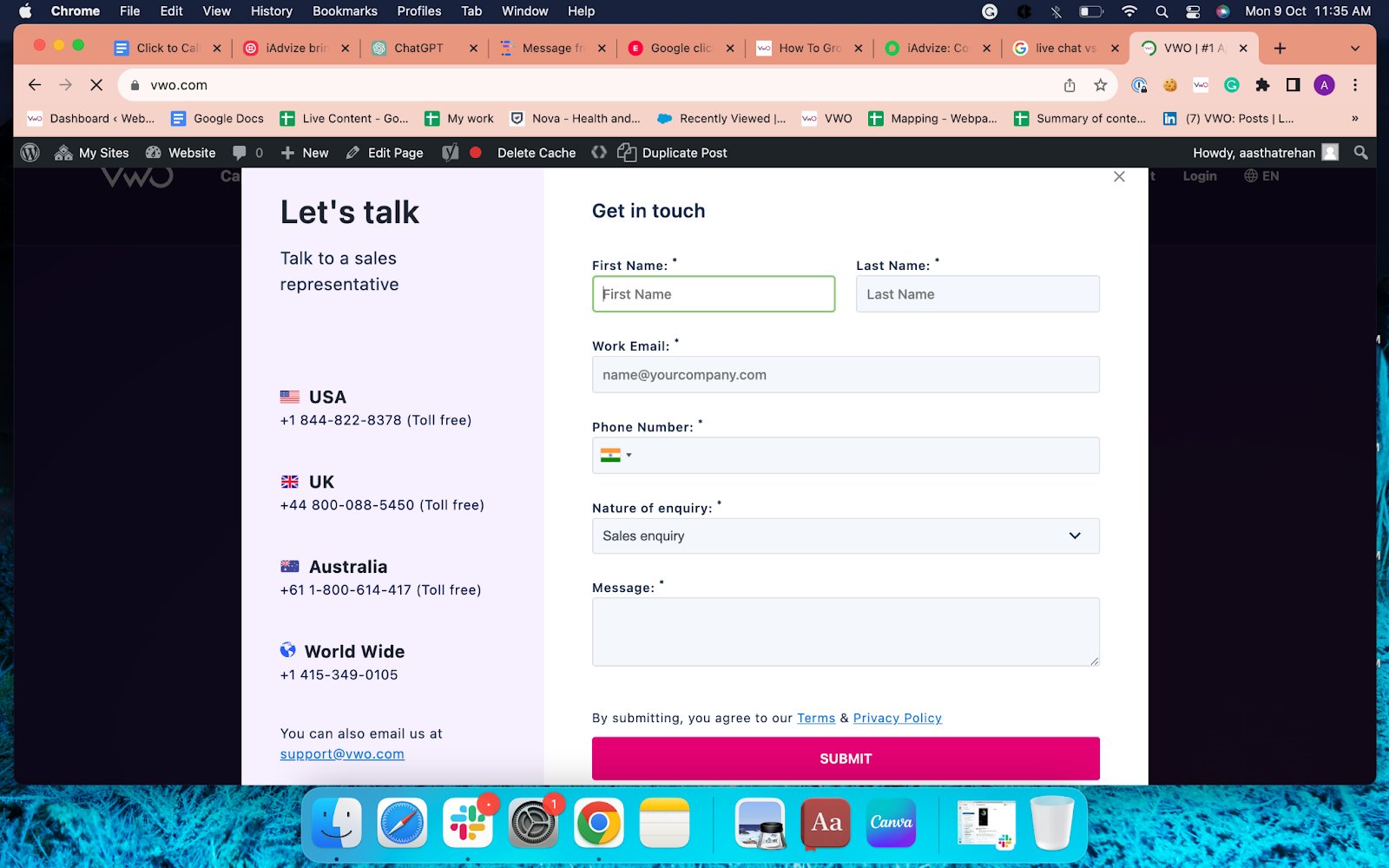Click-to-call, also known as click-to-talk or click-to-dial, streamlines the process of initiating a VoIP call directly from your website or app. It eliminates the need for users to disrupt their browsing flow by manually entering a phone number. Click-to-call not only builds customer trust but also leads to improved conversion rates, making it easy for customers to engage at critical moments.
Imagine a busy executive who’s on a time crunch visiting your website and seeking to connect with your sales team. With click-to-call technology, this executive can effortlessly initiate a phone call at the click of a button, bypassing the need to manually dial a number. This seamless integration of online interaction with real-time conversations is a game-changer for businesses in today’s fast-paced digital landscape.

Why use click-to-call?
While your website or app is rich with valuable information, there are instances where customers prefer direct human interaction. They might seek more details about your product or service before making a decision, or have a support concern that can’t wait for an email response. Click-to-call offers a seamless way for customers to connect with your sales and support teams right from your website.
“Do people still use the phone for conversations?” you may think. The answer is yes! Adding a click-to-call button has proven to increase the likelihood of customers reaching out significantly. And when they take this step, the chances of them making a purchase also rise.
Beyond driving sales and enhancing customer satisfaction, this feature can also help mitigate negative impressions. Research indicates that a significant portion of users are more inclined to explore a company’s competitors if direct calling isn’t an option. Additionally, trust levels decrease when phone contact isn’t readily available.
Advantages of click-to-call
Embracing ‘click-to-call’ transforms customer communication, enhancing both conversions and customer service. Below are 4 compelling benefits of adding this feature to your website.
1. Helps in gathering customer data
Tracking click-to-call interactions is simpler than tracking phone calls, offering insight into the webpage that prompted the call. This data is invaluable for customer journey mapping.
Armed with this knowledge, you can enhance the page’s content, visuals, and user experience for a smoother customer journey.
2. Increased conversion rates
Click-to-call drastically increases conversion rates. For example, if a prospective customer browsing an e-commerce platform has a query about a product, they can effortlessly click-to-call for immediate assistance, significantly boosting the likelihood of a successful sale.
3. Heightened efficiency for sales and support teams
Integrating click-to-call into a CRM system reduces errors associated with manual dialing. This results in streamlined workflows and simplifies the monitoring and reporting of interactions.
4. Establishes trust and fosters loyalty
Providing real-time access to a live representative builds trust in your brand. It signifies that your business is readily accessible and dedicated to ensuring customer satisfaction. For example, if a customer requires clarification about a service, they can click-to-call and promptly receive answers, thereby fostering trust and loyalty.
5. Enhances B2B communication
Click-to-call significantly improves B2B communication, offering convenience and greatly enhancing response rates. This technology is a potent tool for businesses seeking swift connections with potential clients, leading to more substantive conversations and potentially valuable business partnerships.
Ultimately, click-to-call acts as a catalyst for efficiency, customer satisfaction, and increased ROI in customer interactions.
Impact of mobile adoption on click-to-call
The surge in mobile device usage has increased the popularity of click-to-call technology. Google, offers businesses the capability to implement this feature, resulting in widespread adoption. Research from eConsultancy reveals that 40% of mobile searchers utilize Google’s click-to-call, with over 50% finding it useful. This shift towards mobile-driven calling has led to a significant increase in inbound calls to businesses.
Moreover, eConsultancy’s data demonstrates how crucial click-to-call is for consumers. A substantial portion (36%) of mobile searchers expressed disappointment if this option wasn’t available. Additionally, 32% would feel frustrated or annoyed, while 30% would be disappointed in the brand if click-to-call technology wasn’t readily accessible.
Text vs. voice?
Balancing phone support and live chat offers many advantages. Phone support offers personalized interactions but at a higher cost. Live chat reduces wait times and expenses but may lack the same level of personal touch.
Many successful companies integrate both options, tailoring them based on customer device preferences. This ensures diverse preferences are met, boosting satisfaction and accessibility.
This strategy recognizes the evolving landscape of digital customer interactions. Providing multiple communication channels allows companies to connect effectively, meeting customers where they’re most comfortable. This adaptability demonstrates a customer-centric approach, leading to stronger relationships and enhanced service delivery.


For example, VWO employs a comprehensive customer support strategy, leveraging both live chat and phone interactions. In the calling feature, customers have the option to schedule a call at their convenience. On the other hand, through the chat function, customers can convey their queries in real-time.
This dual approach ensures that VWO caters to a wide range of customer preferences and communication styles. By offering both scheduled calls and instant messaging, VWO maximizes accessibility, providing customers with flexible and efficient support options.
The takeaway
The world of B2B services is constantly evolving, and integrating click-to-call technology can be a game-changer. It seamlessly bridges the gap between online interaction and real-time conversation, offering potential clients a convenient and immediate way to connect. The benefits are substantial: real-time engagement, increased conversions, heightened customer satisfaction, and improved lead generation.
By incorporating click-to-call into your workflow, you not only streamline client inquiries but also pave the way for more meaningful and productive conversations. With a strategic approach focused on maximizing ROI, you can ensure that click-to-call becomes a cornerstone of your client acquisition and retention strategies.










